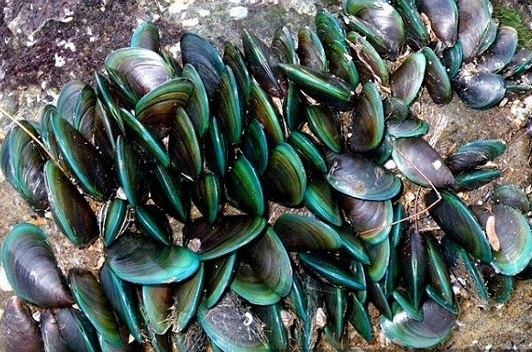Guidance on techniques for growing carp carp in high seas
There are many different farming methods such as concrete piles, wooden poles, hanging bandages or hanging wires . Hanging on pontoons or by rafts is widely used because it is suitable for areas with turbulent waves, easy to move and manipulate. .
How to grow carp carp has high economic efficiency
Chem copy (Green-mussel mussel) is a species of bivalve molluscs, living widely distributed in tropical and subtropical waters, including Vietnam. They are distributed from the top of the lower tidal line to 20m, at a depth of 5-6m, the water density is relatively high. Copy Chem has economic value, high nutrient content, is popularly cultivated as a food source for humans and other cultured subjects. In the wild, green mussels mature throughout the year but focus on two main seasons: January - May and August - 10. The gonads of mussels exist in three forms: male, female and bisexual. When mussel matures, the gonads of males are milky white and females are red-orange.

Chem farming techniques in the sea are turbulent
Choose varieties and stimulate ejaculation, laying eggs
Mussels selected for breeding are healthy individuals, with sizes ranging from 85 - 100mm, ie mussels that are over 1 year old from the larval stage, this is the period when the mussel has a mature gonad. Feeding for 3-7 days, feeding single-celled algae such as Chaetoceros sp, Nanochlopsis sp, Platymonas sp . and often aeration, replacing 40-60% of daily water.
After cleaning the shell , pour it through fresh water, sea water and spread it out evenly in the sun for 20-30 minutes, put it in a hanging cage on the prepared breeding tank. Continue to use a hose to strongly rinse the chlorine-treated salt water or aquasep. Through many stages, irritated maternal mussels, eggs, sperm are released and fertilized in the water. When you smell fishy, check under a microscope with fertilized eggs, take out maternal mussels out.
Floating larvae
After fertilized eggs develop into larvae D (Veliger) will be transferred to larval rearing tanks. The density of larvae ranges from 2 to 3.5 individuals / ml. Add water in the first days and replace 25 - 30% water from day 5 onwards. Check larval size every 2 days. D-larval larvae feeding on single-celled algae Nanochloropsis sp, Chaetoceros sp . algae fed 5 - 10 thousand cells / ml, feeding twice a day in the morning and afternoon. From the pre-peak period afterwards, at night at 21-22 hours, it is possible to add bread yeast. At this time, the salinity of the water must be between 30 and 34%; 24-hour aeration to ensure a temperature of 24-30oC.
Collect larvae and culture methods
Drop clingers made from nylon strings, plastic sheets, nets . cleaned to allow larvae when larvae have eye spots. 3 - 5mm seedlings can be obtained about 50 days after calving. The habitat of green mussels is very suitable for enclosed, less turbulent and flowable water bodies. Water quality is rich in natural food, with salinity of 20-30%; temperature 23 - 30oC; pH 7.5 - 8.5; dissolved oxygen 4 - 5mg / l.
There are many different farming methods such as concrete piles, wooden poles, hanging bandages or hanging wires . Hanging on pontoons or by rafts is widely used because it is suitable for areas with turbulent waves, easy to move and manipulate. . After 2 years can harvest commercial mussels with size 10 - 15cm, volume 80 - 120g.
- How to grow shallow lotus flowers to chase mosquitoes in the rainy season
- Techniques for growing lavender
- Techniques for growing chayote for many tops and wrong results
- Techniques for growing papaya trees are fruitless all year round, with few pests and diseases
- Lemongrass planting techniques are convenient for every home
- Few people know about carp
- How expensive is the Japanese Koi carp?
- Techniques for growing jackfruit with superior yield
- Techniques for growing flowers in the garden
- Technical guidance on planting and caring for geraniums
- Video: How Japanese people give birth to Koi carp
- Carp have a human face
 'Barefoot engineer' invents a pipeless pump
'Barefoot engineer' invents a pipeless pump Process of handling dead pigs due to disease
Process of handling dead pigs due to disease Radiometer
Radiometer Warp Engine: Technology brings us closer to the speed of light
Warp Engine: Technology brings us closer to the speed of light